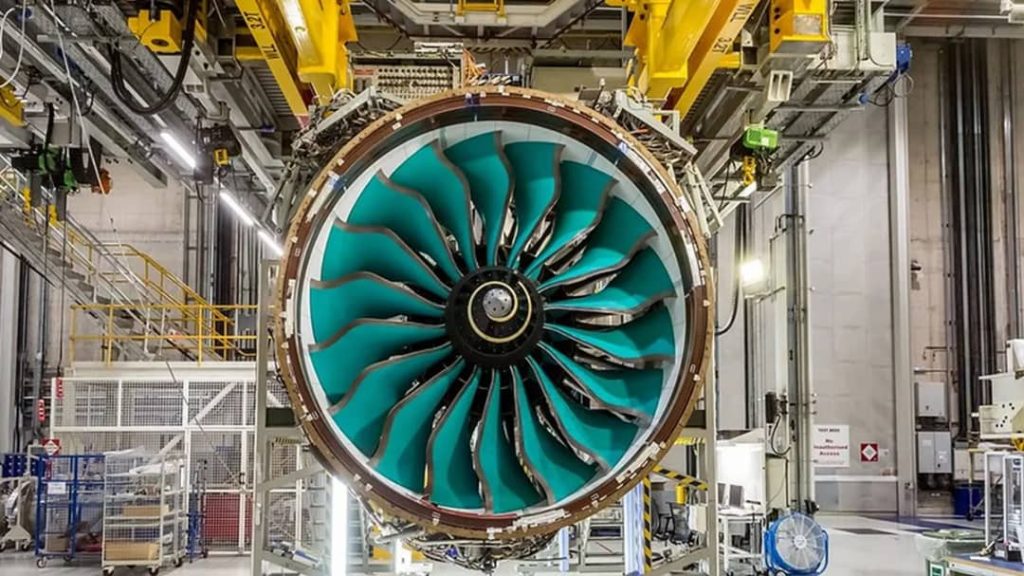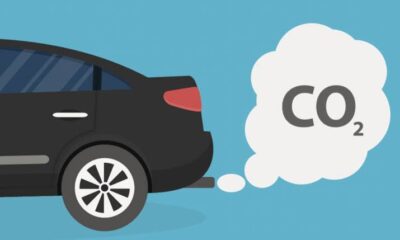MOTORING
Rolls Royce gearing up to test its Ultrafan engine

Rolls-Royce has announced that the construction of its UltraFan technology demonstrator was complete and that testing was now underway. A significant program milestone was reached when the demonstrator engine was moved from the build workshop to Derby, U.K.’s Testbed 80, where it was mounted in anticipation of testing.
The first test of the demonstrator is expected to take place early next year and will be operated using 100 percent Sustainable Aviation Fuel.
The largest aero-engine demonstrator in the world, UltraFan features several revolutionary innovations that increase fuel efficiency, which reduces emissions and improves sustainability. The technology could also be used to improve the efficiency and sustainability of our present in-service engines shortly.
“The UltraFan demonstrator is designed for the future – it will be ready to run on 100% Sustainable Aviation Fuel from day one of service. In addition, we are actively exploring potential options for hybrid-electric and hydrogen power solutions,” explains Rolls Royce.
The fan in the UltraFan demonstration is 140 inches (3.56 meters) in diameter, and it uses 25% less fuel than the first generation of Trent engines. It combines a brand-new engine design with a set of technologies that will make air travel more sustainable for decades.
UltraFan, Rolls Royce says, offers a range of sustainability options for transitioning to net zero aviation. There are alternatives for transferring innovations from the UltraFan development program to the present Trent engines shortly to provide improved fuel efficiency and emissions reductions.
Rolls Royce’s Power Generation System 1 (PGS1) hybrid-electric system has previously been tested up to 1.5 MW, giving them unmatched experience in the industry. These tests were conducted utilizing a modified AE 2100 engine equipped with power electronics and cutting-edge thermals in Bristol, UK, and Trondheim, Norway.
Rolls Royce is also experimenting with hybrid and hydrogen-fuelled variants and also analyzing new product applications for its engines and future airframer requirements. One possibility is a “More Electric” engine, where electrical technology is increased, for instance, by directly extracting power or electrifying the fuel and oil systems. As an alternative, micro-hybridization would allow us to utilize stored energy to improve engine performance throughout the flight cycle and reduce fuel use.
It announced a research program of rig and engine tests to demonstrate that hydrogen fuel can reliably and efficiently supply power for small- to medium-sized aircraft starting in the mid-2030s as part of its commitment to fully understanding the opportunities and challenges of hydrogen power systems.
Various locations, including the Rolls-Royce test site in Mississippi, USA, are being considered for the two ground tests, which are scheduled for a Rolls-Royce AE 2100 engine in the U.K. this year and a Rolls-Royce Pearl 15 jet engine in the future.
With input from Cranfield University on fuel system management, this will expand on hydrogen combustion tests currently well underway in collaboration with Loughborough University and the German research institute DLR.
“We have further ambitions to move this on to a flight test phase as part of the program in the long term,” explains Rolls Royce.
The UltraFan demonstrator’s size and technical complexity were specifically accommodated by Testbed 80, the largest and smartest testbed in the world. Several hours of experimental engine testing have already been done since it was first used in 2020.
The U.K.’s Aerospace Technology Institute and Innovate UK, the EU’s Clean Sky programs, LuFo, and the German State of Brandenburg have all supported the UltraFan technology demonstrator initiative.
MIKE OCHONMA
-

 AVIATION5 years ago
AVIATION5 years agoPhoto News: Air Peace commence flight operations to South Africa
-

 Car News5 years ago
Car News5 years agoPolestar is recalls over 2000 electric cars due to software bug
-

 RAIL5 years ago
RAIL5 years ago36 Killed in Pakistan Train Accident
-

 Technology5 years ago
Technology5 years agoCommon mistakes in CO₂ emissions calculations
-

 Business5 years ago
Business5 years ago2016 Volvo XC60 review and specifications
-

 Reviews5 years ago
Reviews5 years ago2021 Audi A6 Specifications and Review
-

 Reviews3 years ago
Reviews3 years agoDebutant Kia’s new K8 sedan benchmarks luxury, safety
-

 SAFETY / CAR CARE5 years ago
SAFETY / CAR CARE5 years agoHandbrake warning light; what it means and what to do
